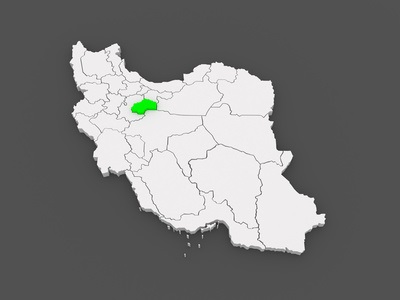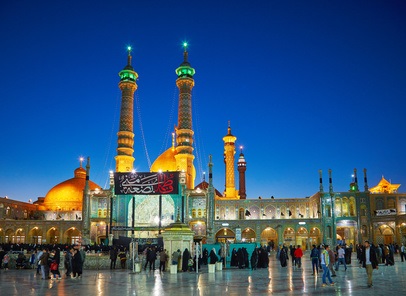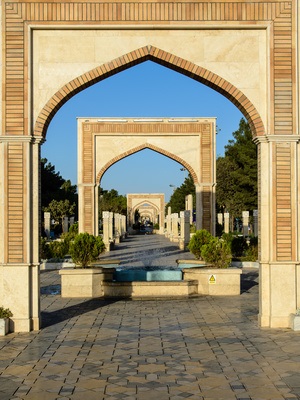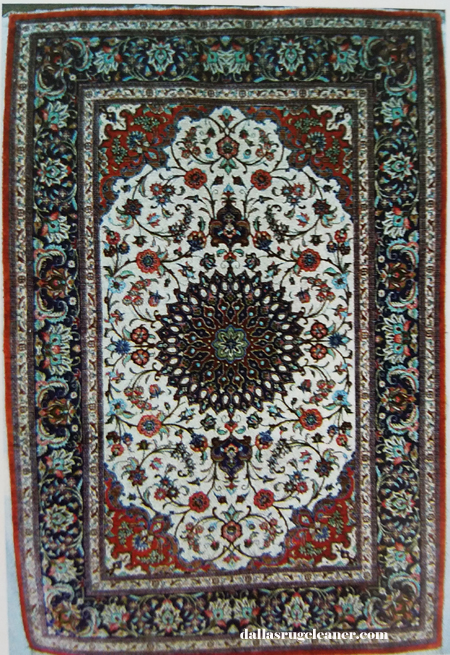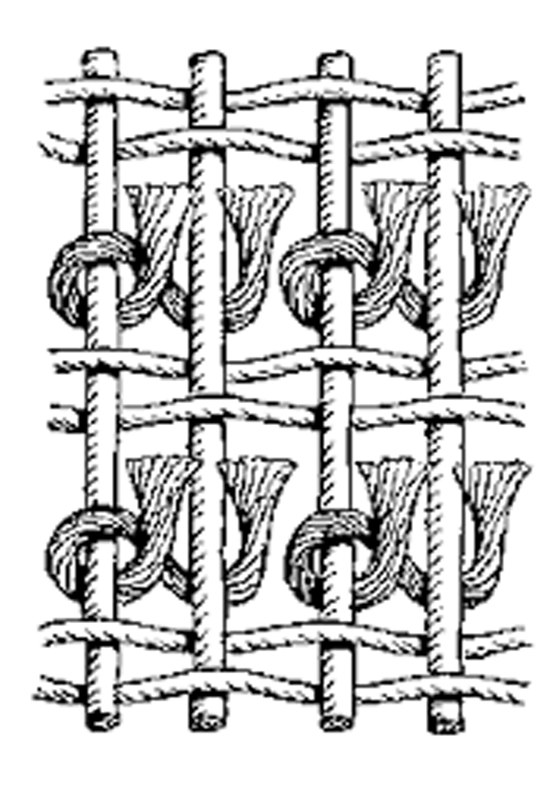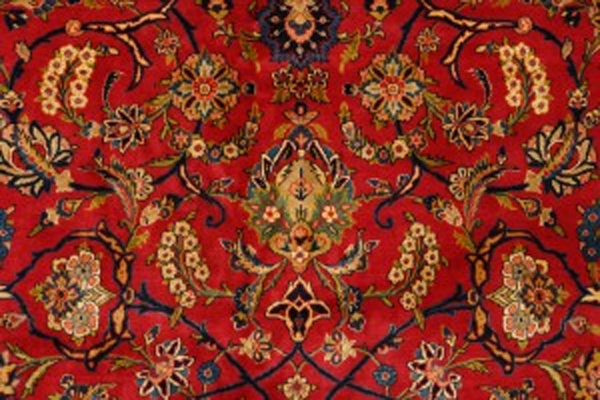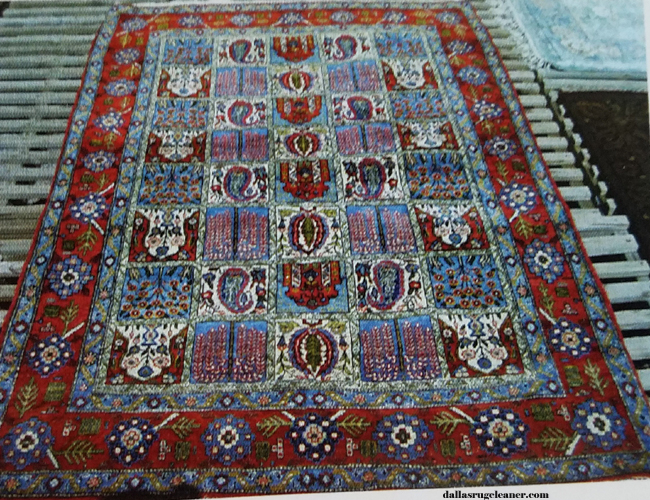QUM ORIENTAL RUGS
LOCATION - QUM PROVINCE, IRAN
Qum oriental rugs (Qom, Ghom, Ghum, Ghoun, Kum) are woven in Qum, a large city in Iran, 90 miles south of Isfahan and about 60 miles South of Teheran, the capital city of the Iranian Government.
As the center of the Shia Theocracy, Qum is one of the holiest cities in Iran. This very old city has a rich religious history and contains many impressive architectural monuments.
WEAVING HISTORY
Surprisingly, Qum oriental rugs have only been woven since the 1930s. Around that time, rug merchants from Kashan began to move their looms to the oasis of Qum. Once settled there, weaving flourished as artisans incorporated a large variety of styles, while managing to retain characteristics that are distinctly recognizable as Qum rugs.
Today, the largest amount of silk rugs from Iran are made in Qum.
CONSTRUCTION OF
QUM ORIENTAL RUGS
The construction of Qum oriental rugs was and is unique. They use very fine silk fiber and the smaller diameter of the silk fiber allows for meticulous detail in the designs. The details are never compromised.
THE FOUNDATION
The foundation of the Qum oriental rugs contains depressed warps (up & down foundation cords). Depressed warps occur when the wefts (side to side foundation cords) are pulled tightly from either side rather than put in with minimal tension. This will displace the warps into 2 levels.
The warps are cotton or silk with 2 shoots of cotton or silk for the wefts. The cotton may be dyed blue or light grey.
THE KNOT
The knot is the Persian or Senneh asymmetrical knot. The yarn is placed in a loop around one of the warps (up and down foundation cords) and remains loose under the other. The 2 ends emerge on either side of the warp. In the Qum rug, the knot opens to the left.
Knots per square inch (KPSI) is used to measure the knot density, which is one measure of the quality of a weaving. The KPSI of Qum rugs is quite high.
THE PILE
Soft silk or high quality Kork wool is used for the pile. The highest quality Qum rugs are made of pure silk. You can also find wool pile rugs with accents of silk (usually outlining designs), and silk pile rugs on silk and cotton foundations, as well as rugs made entirely of silk.
THE ENDS
The bottom of the rug has twisted uncut loops. The top end has a kilim (a flat area of varying size woven at the end of the rug before the fringe is finished) with knotted fringe.
THE SIDES
The sides contain a single cord, overcast in wool or silk.
THE DESIGN
Since there was no previous weaving tradition in the city of Qum, many of the designs were borrowed from those of Kashan, Tabriz, Isfahan, and other older weaving centers. The weave is similar to the Kashan but more irregular on the back.
The designs contain curvilinear (mostly floral motifs and patterns that are usually intricate) and are an example of the city style of Persian rug.
Floral and garden motifs, landscape features and historical stories, central medallions with or without corners and vine patterns, as well as hunting scenes can be found in Qum oriental rugs.
All over patterns such as botehs are also common. Prayer rugs, often with Tree of Life designs, the Zel-i-Sultani and Shah Abbas patterns (with or without a central medallion), as well as designs similar to Bakhtiari garden rugs and Ishfahan rugs can be found in Qum oriental rugs.
Many people prefer to hang Qum rugs on walls like tapestries, rather than laying them on floors, due to their thin but sturdy construction and relatively small sizes.
COLORS
Red, medium blue, ivory, gold, brown, and black are the usual colors. The black, blue, and red dyes are usually not colorfast on the silk rugs from Qum and the dyes are not always lightfast on either the wool or silk rugs. The reds and blues are the most common field colors.
SIZES
Qum rugs usually come in small sizes (4x6 and smaller), understandably so because of the amount of time required to make these intricately woven rugs. Occasionally, they can be found in larger sizes.
COPIES OF QUM ORIENTAL RUGS
FROM OTHER COUNTRIES
Copies of Qum rugs have been produced in Pakistan and India, as well as in China. Below are some tips on how to determine if a rug is a real silk rug from Qum or an imitation from another rug-weaving country:
- The Fringes. Real Qum Oriental Rugs will have very small knots at the end of the pile where the fringes begin. They will never be perfectly even. A fake Qum rug may have very straight and even knots. The fringes in a real Qum rug will be silk.
- The Silk. Real Qum rugs are made with natural silk. Fake Qum rugs are made with commercial silk. Commercial silk shines brighter than natural silk and is not as soft as real silk.
Rub the palm of your hand over the surface of the rug for several seconds. If your hand becomes warm, it is real silk. For more information about silk rugs, please click here.
- The Knot Count. Learn how to measure knot count. (See video above.) Count the knots over 1 inch and square the number. This way you can verify the knot count number offered by the seller. Also check to see if some knots are a little tighter than others or a bit uneven. This would be indicative of a real handmade rug.
CALL ABC TO ASSESS A
QUM RUG
Because it is difficult to determine whether or not a rug is silk, let alone a Qum rug, please bring any rug in question to our office so our trained staff can help you.
If you believe you have a silk Qum rug or any silk rug or if you have found one you would like to buy, we can help to verify the origin and silk content of the rug for you at no charge.
We are here from 8 to 5 Monday through Friday and the 1st and 3rd Saturday of each month from 10am to 1pm. Our phone number is 607-272-1566.
"The Cleanest Clean You've Ever Seen."
by
ABC Oriental Rug & Carpet Cleaning Co.
130 Cecil Malone Drive Ithaca, NY 14850
607-272-1566
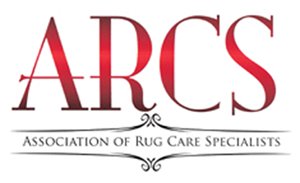
ABC Oriental Rug & Carpet Cleaning Co.
is a FOUNDING MEMBER of the
Association
of Rug Care Specialists.
"To Teach, Cultivate and Advance the Art and Science
of Rug Care"
Oriental and Area Rug Washing at ABC Oriental Rug
Rugs on the wash floor are gently scrubbed before thorough rinsing.
Gentle scrubbing continues. Note the wringer in the background-the next step in the washing process after rinsing.
After thorough rinsing, the rug is sent slowly and carefully through the wringer to take out as much of the water as possible before being hung on racks in the drying room.
Rugs are hung on a rack in the temperature controlled drying room until completely dry.
